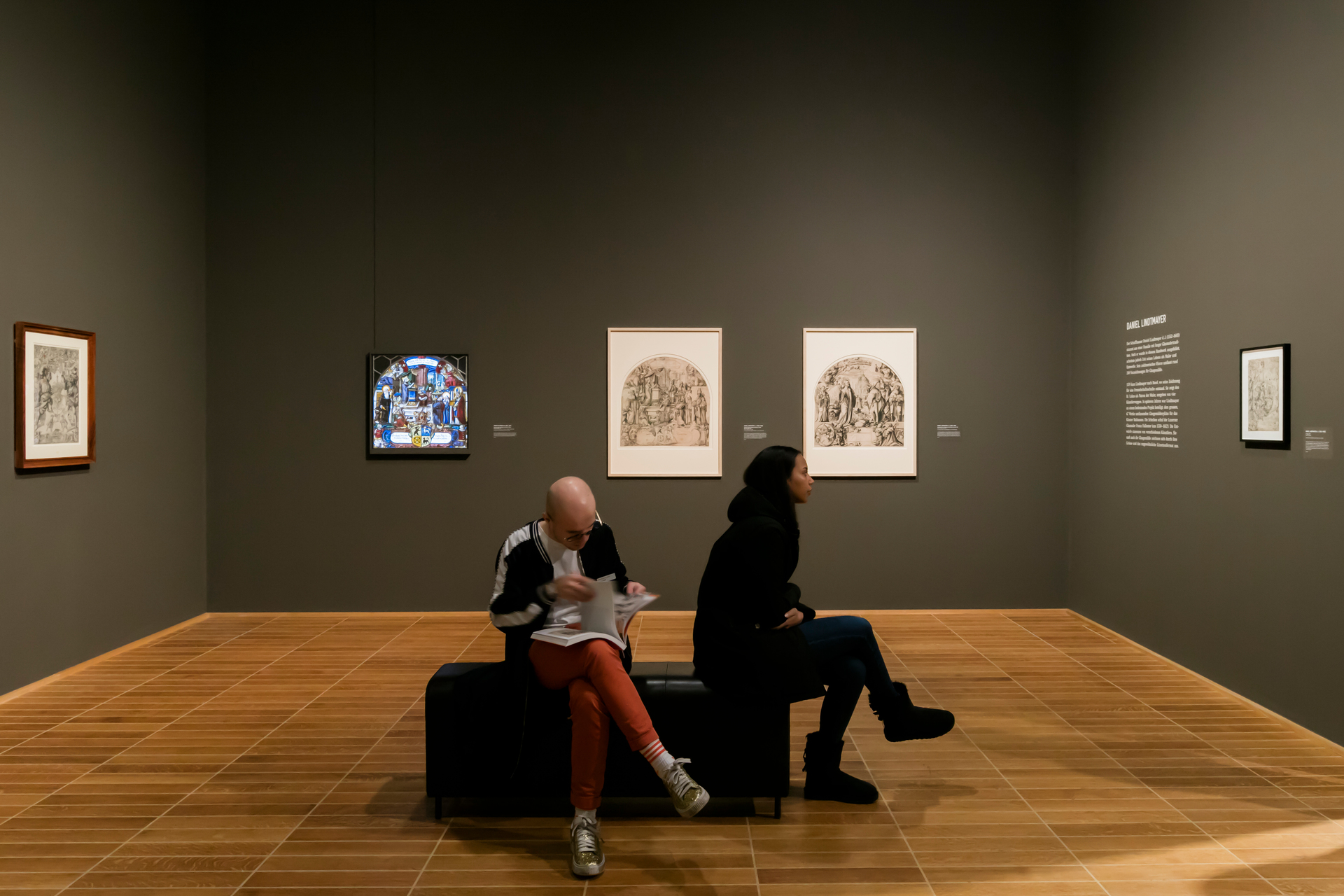Luminous Figures
Drawings and Stained Glass Paintings from Holbein to Ringler
In the sixteenth century, small-format glass paintings are a popular art form in southern Germany and even more so in the Old Swiss Confederacy. In fact, if the scholar Johann Fischart (1546/47–1591) is to be believed, glass paintings are to Switzerland what fir cones are to the Black Forest and snow to the Alps.
These are works of art of outstanding quality that graced town and guild halls, universities, monasteries, and hospitals. The panels were executed by professional glass painters, based on designs commissioned from renowned artists of the time. Hans Holbein the Younger, Niklaus Manuel, Urs Graf, and Tobias Stimmer were among those who created preparatory drawings for glass paintings. Few of the final works are extant today, but numerous design drawings have survived.
Institutions such as the Swiss estates (now known as cantons), guilds, and other corporations as well as individuals commissioned stained glass paintings. Donating such a work was a common and widely recognized act of social communication, lending representative expression to alliances, friendships, and honors. That is why virtually every glass painting prominently features the donor’s coat of arms. The motifs surrounding this central element vary widely and include depictions of religious themes, but also personifications and allegories, representations of professions, and scenes from Swiss history.
Our exhibition seeks to shed light on this genre, whose key role in the history of visual art in Switzerland is rarely appreciated. Showcasing around ninety works from its golden age in the sixteenth century, the presentation offers a survey of glass paintings and design drawings from Basel, with forays into the art scenes of other cities like Berne, Nuremberg, and Schaffhausen. Juxtapositions of drawings and stained glass paintings illuminate the close interrelation between the two art forms.

